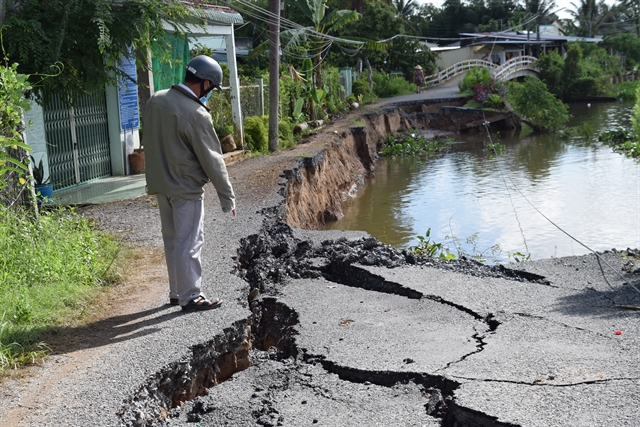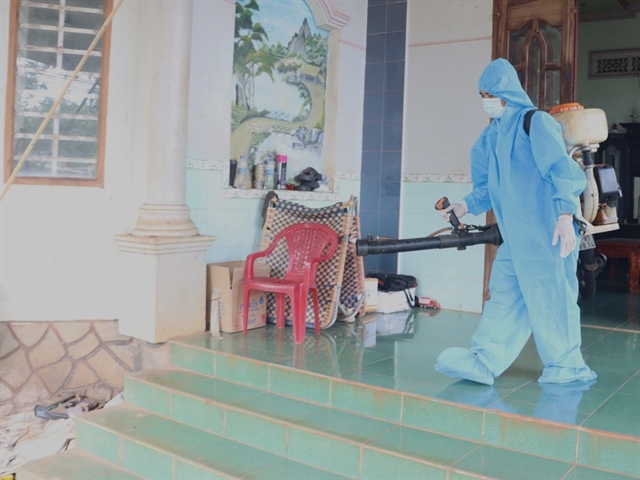 Environment
Environment


|
| Erosion of 50 metres of land along a riverside road in Đồng Tháp Province’s Châu Thành District last month. — VNA/VNS Photo Chương Đài |
ĐỒNG THÁP — Erosion along river banks in the Cửu Long (Mekong) Delta province of Đồng Tháp has caused more than VNĐ8.2 billion (US$353,800) in property damage this year, according to the province’s Irrigation Sub-department.
Erosion along the Tiền and Hậu rivers, two tributaries of the Mekong River, has caused 3.06ha of land areas to fall into rivers and VNĐ6.8 billion ($293,400) in damages.
Huỳnh Minh Đường, head of the sub-department, said that river erosion in the province had been occurring even in the dry season.
From 2015 to 2019, more than 329ha of land eroded and fell into rivers, causing one death and VNĐ405.7 billion ($17.5 million) in property damage.
Erosion along the Tiền and Hậu rivers has occurred over a total length of 29.3km in 16 communes, wards and towns.
Erosion along the Tiền River is forecasted to occur in 35 communes, wards and towns in the coming time, Đường said.
In Đồng Tháp, 6,400 households living in erosion-prone areas need to be relocated to safe areas. The province is building more residential areas and residential clusters to relocate households in erosion-prone areas.
Its People’s Committee has petitioned the central Government to support the province to build 23 new residential clusters, including six priority clusters for 1,900 households now living in erosion-prone areas.
The province’s Department of Agriculture and Rural Development is also monitoring erosion hotspots and implementing erosion prevention projects along the Tiền River in Hồng Ngự, Thanh Bình and Châu Thành districts, and Cao Lãnh City.
Provincial departments are banning construction of houses and other building facilities along erosion-prone areas and are offering support to households in these at-risk areas so they can relocate. — VNS




